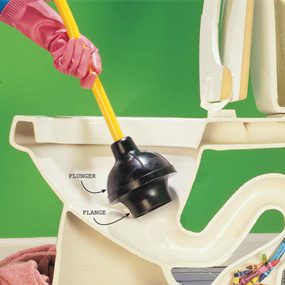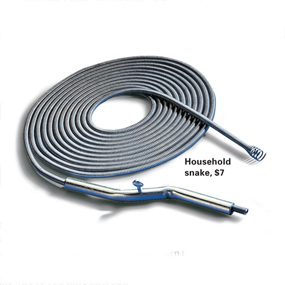Please excuse me on my topic. If you are eating, you can read my post later.
For those interested, you may continue reading....
As you all know, I am a widower, meaning almost all the household repairs and decisions are made by me, myself, and I, of course with some help and suggestions from my teenage son.
Last night, my toilet got clogged. And, as what I have been doing, being so dependent on "Mr. Google," my first solution, is to look for ways to fix it using the internet!
And let me share with you this article.
Step 1: Begin with a plunger
For about 90 percent of clogged toilets, you only need one special tool—a plunger. Buy one with an extension flange on the rubber bell-shaped end (lead photo). It's designed to fit toilets better so you can deliver more “oomph” to the plunge. You could pull a woodchuck from a hole with one of these things. It'll unplug sink and tub drains too, if you simply fold the flange back into the bell.
A poor flush means that your toilet drain is either partially or completely plugged. A toilet that's completely plugged—a no-drainer—is obvious. The toilet bowl will fill to the brim with flush water and perhaps overflow. Give the water level 10 minutes or so to drop, then attack the problem with a plunger (Photo 1).
However, most clogged toilets are slow drainers, that is, flush water partially fills the bowl but doesn't rush out and clean away the waste. The water level remains high, then usually drains down to normal height within a minute or two. You might not know the toilet is clogged until you flush it. So if you suspect a problem, test the drainage first as we show in Photo 2. If it doesn't drain, don't flush it. Reach for the plunger.
Photo 1 shows how a plunger fits over and seals the toilet drain. Wear rubber gloves—things can get messy—and follow these plunging tips:- Make your first plunge a gentle one. Initially the bell is full of air. A hard thrust will force the air back around the seal and blow water all over the bathroom and you!
- Once you force out the air, plunge vigorously in and out, maintaining the seal. You'll be forcing water both directions in the drain, which will effectively loosen most clogs. Stick with it, plunging 15 to 20 times if necessary.
- Be patient. Try alternating between steady strokes and occasional monster heaves.
- Keep enough water in the bowl so the plunger stays covered. Trying to force air through the toilet trap won't generate much pressure.
Step 2: Reach for the snake
If the plunger won't open the drain, or if you can force out the water with the plunger but the toilet still won't flush well, reach for the snake (Photo 3). A drain snake is a long wire coil with a corkscrew-like tip that you feed into your pipes until it encounters the clog. Then you turn the snake clockwise, so that the tip screws into or through the clog and breaks it up. Or the debris winds onto the wire so you can pull it out.
Even the least expensive snake (Photo 3) will clear a toilet. But the closet auger (Photo 4) is a special type designed to get around the first bend, keep debris at arm's length, and yet still spin the coil to hook “foreign objects.” A rubber sleeve protects the enamel bowl from scrape marks. These snakes are short because most obstructions catch in the first S-bend or at the floor flange. (Plumbers report that the most common foreign objects are toys.)
Step 3: Major surgery if all else fails
If the clog resists all your efforts, you'll probably have to pull up the toilet. This job will take several hours, because you have to turn off and unhook the water supply, partially disassemble the toilet, and unscrew it from its mounting ring. Chances are, you can then get at the problem. Be sure to buy a new wax ring and new mounting bolts to reseal the toilet base to the mounting ring.
However, if other drains in your home are plugged, or if water comes up through them, the problem is probably farther down in the main drainpipes, often out of easy reach. For those clogs you may have to call a plumber. Plumbers are expensive, but they can put your bathroom back in service fast, even if there's a major blockage.




This is actually helpful. It's not easy to unclogged dump. It is nice to drop by your blog!
ReplyDeleteThanks for dropping by littleyana. I think I have no other choice but to be a "jill-of-all-trade". hehehe. More stories and tips to share when I have the time. Just visit every now and then. :)
ReplyDelete